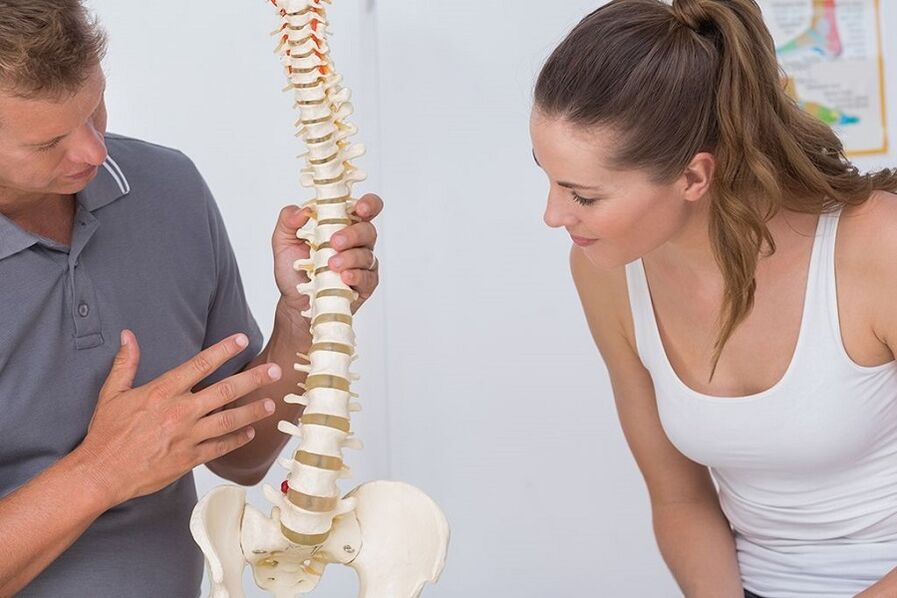According to medical statistics, cervical spine osteochondrosis is a very common disease in recent years. Everyone has experienced unpleasant symptoms at least once in their life.

The disease itself is a malfunction of the intervertebral discs of the cervical spine. After all, the maximum constant load is formed in this part of the human waist.
The cervical region consists of 7 discs. Due to the weakness of the muscles and the constant loads on them, various injuries and disorders can occur at work. Due to all these factors, cervical osteochondrosis begins to develop.
Types of diseases
Osteochondrosis is an insidious disease that does not manifest itself for a long time. There are several stages in the development of this disease:
- Grade 1 cervical osteochondrosis (manifested by primary disorders of the spine);
- Grade 2 cervical osteochondrosis (the distance between the cervical lumbar discs begins to decrease);
- Grade 3 cervical osteochondrosis (complete destruction of the intervertebral disc ring and severe deformation of the entire spine);
- Grade 4 cervical osteochondrosis (the last stage in the development of a disease that can lead to disability).
Causes of the onset and development of the disease
Like any disease, cervical osteochondrosis has its own causes and developmental factors. Until several decades, only the elderly were susceptible to the disease. Osteochondrosis of the neck affects men who are engaged in heavy physical labor after the age of 40.
Nowadays, osteochondrosis of the neck is becoming more common and affects young people over 20 years old. There are many reasons for the development of cervical and thoracic spine diseases:
- excess weight;
- incorrect posture and consequent 1 or 2 degree curvature of the waist;
- heavy physical labor or professional sports with various spinal injuries;
- causes of stress and severe emotional stress;
- weak muscles of the cervicothoracic region;
- sudden cessation of sports after long workouts;
- sitting at a computer or working in a position for a long time.
If you find yourself for the reasons listed, you are in the so-called risk group. In this case, cervical lumbar osteochondrosis should be prevented.

Manifestation of the disease
A person with grade 1 osteochondrosis has virtually no symptoms of a developing disease. Only the initial contraction of the neck muscles begins.
Grade 2 cervical lumbar osteochondrosis generally presents as minor pain that can occur in the cervical and thoracic segments. This occurs as a result of compression of the nerve endings due to a decrease in the distance between the spinal discs.
Grades 3 and 4 of the disease cannot be ignored. In this case, the deformity of the spine can be noticed not only by a person, but also by the naked eye.
The main and most common symptoms of this disease include:
- severe persistent headache;
- call at the beginning;
- impaired movement and coordination;
- deterioration of vision and dental health;
- cerebrovascular accident, insomnia and various neurological problems.
In grade 1, 2, 3, or 4, the pain can spread to the shoulder joint and arm area. One of the features that distinguishes this symptom from other diseases is that the intensity and concentration of anxiety change depending on the position of the neck and dizziness.
Disease syndromes
All the symptoms of osteochondrosis can be misdiagnosed and misdiagnosed. Therefore, with the existing symptoms, it is necessary to study all the causes of their appearance. Thus, he knows several syndromes that distinguish the causes of medical origin:
Radicular syndromes
In this case, the nerves are constricted and the person feels pain and numbness in one part of the neck. Unpleasant sensations may spread to the back, scapular area, and arms;
Irriate reflex syndromes
It manifests itself in severe, unbearable pain that spreads to the neck at the back of the head. It often occurs with a sharp movement or rotation of the head;
Vertebral artery syndrome
In this case, the name speaks for itself. The artery is constricted and the person feels a severe headache that can result in loss of consciousness or vomiting;
Heart syndrome
It manifests itself with increased heart rate, dizziness and loss of consciousness. Often this condition is misdiagnosed and treatment for angina pectoris begins.

Treatment
A person with osteochondrosis is always treated urgently. His tactics depend on the severity of the disease. Thus, complete recovery is possible after 1 or 2 degrees of treatment. In the later stages, medical correction is usually aimed at preventing complications as well as improving the quality of life.
First aid
What to do when the first signs of the disease appear? First you need to relieve pain in the cervicothoracic region. To do this, you need to take a regular analgesic, sleep or just rest.
The next step is to consult a doctor for proper diagnosis and proper treatment.
Conservative treatment
Conservative treatment with confirmed osteochondrosis is usually prescribed. The patient is shown to be taking anti-inflammatory, analgesic drugs. It is possible to use various gels or ointments to eliminate swelling and inflammation. In addition, the doctor may prescribe a course of massage, therapeutic exercises. Physiotherapy for cervical lumbar osteochondrosis is prescribed in almost all cases.
Surgery
In rare cases, it is possible to perform an operation with severe osteochondrosis. In this case, the patient is put to sleep with the help of general anesthesia, after which the bone formations between the cervicothoracic lumbar discs are removed. After the manipulation, the patient is given additional conservative treatment or physiotherapy.
Preventive measures
Due to the reduction in the age of onset of cervicothoracic osteochondrosis, it is necessary to prevent each person. This is especially true for people at risk.
Important rules
Prevention of cervical osteochondrosis consists of following simple but very important rules:
- look at your posture, do not allow it to bend;
- do not expose the spine to heavy loads;
- you cannot make sudden movements of the head;
- do not get upset, avoid stress;
- do not keep cold, do not get too cold;
- Get rid of bad habits, move on to proper nutrition.
Special exercises
To protect yourself from such a disease, you should do preventive exercises:
- put your palm on your forehead, squeeze your neck muscles, then bring your hand behind your head and repeat the exercise, you should do it in 3 sets for 7 seconds;
- put your palm on your temple, then tighten your neck muscles, repeat the same movement on the other side, the time, the number of approaches is the same as in the first paragraph;
- pull your head back, then slowly bring your chin to the chest area, you should do the exercise 3 times;
- turn your head in different directions - you should do this exercise slowly, without sudden movements;
- tilt your head back, first touch one shoulder with your ear, then the other, repeat the exercise 5 times.
If you have one or more symptoms of the disease, contact your doctor immediately. Maybe you will just be prescribed physiotherapy and that will be the end of the matter. Do not be late, do not start the disease.
Do gymnastics daily. It is better to do basic exercises than to suffer from the disease later.
Ask your doctor how you sleep for cervical osteochondrosis. Follow all the rules, be healthy!

















































